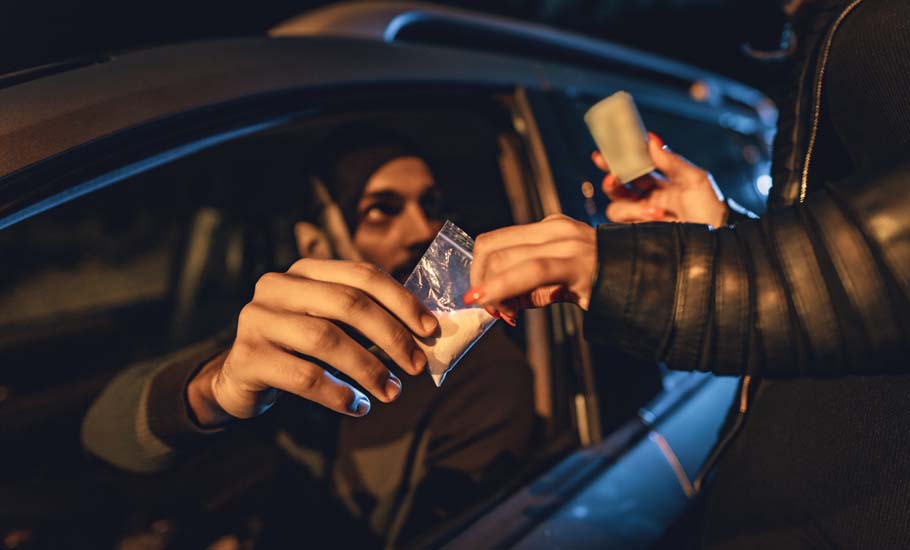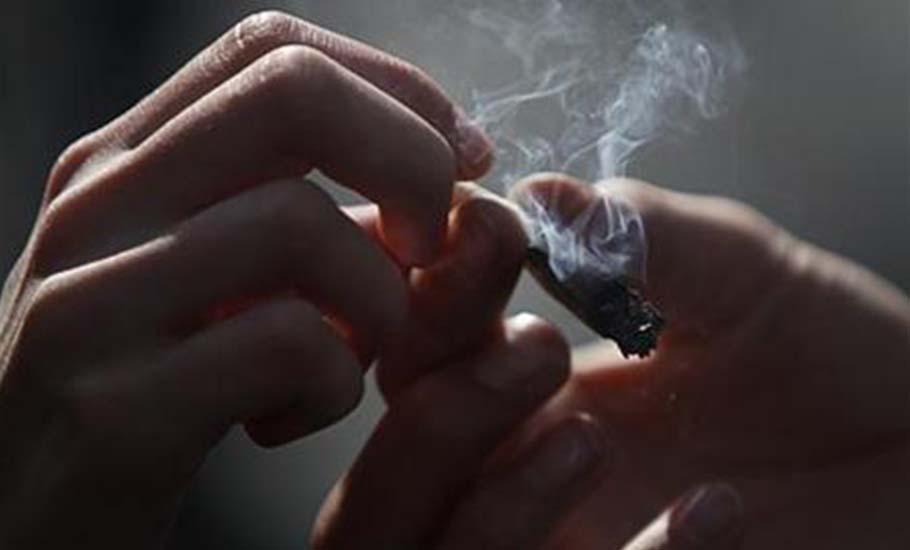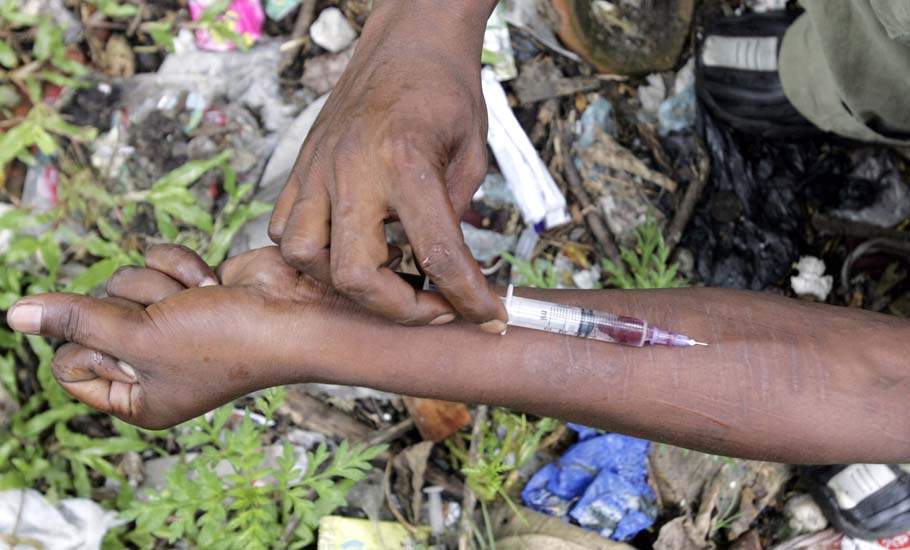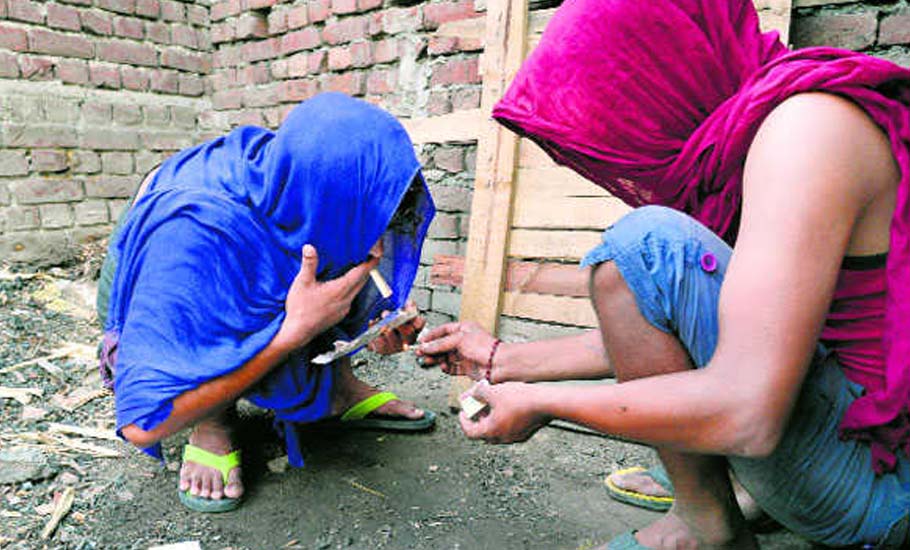
- Home
- News
- Analysis
- States
- Perspective
- Videos
- Education
- Entertainment
- Elections
- World Cup 2023
- Features
- Health
- Budget 2024-25
- Business
- Series
- NEET TANGLE
- Economy Series
- Earth Day
- Kashmir’s Frozen Turbulence
- India@75
- The legend of Ramjanmabhoomi
- Liberalisation@30
- How to tame a dragon
- Celebrating biodiversity
- Farm Matters
- 50 days of solitude
- Bringing Migrants Home
- Budget 2020
- Jharkhand Votes
- The Federal Investigates
- The Federal Impact
- Vanishing Sand
- Gandhi @ 150
- Andhra Today
- Field report
- Operation Gulmarg
- Pandemic @1 Mn in India
- The Federal Year-End
- The Zero Year
- Premium
- Science
- Brand studio
- Home
- NewsNews
- Analysis
- StatesStates
- PerspectivePerspective
- VideosVideos
- Entertainment
- ElectionsElections
- Sports
- Loading...
Sports - Features
- Budget 2024-25
- BusinessBusiness
- Premium
- Loading...
Premium

Why liquor ban failed to sober up Bihar

When Bihar’s liquor prohibition policy kicked in on October 2, 2016, Roshan (name changed) was a daily drinker. With the policy in force and the liquor supply drying up, bouts of headaches, nausea, tremors and anxiety became too much to bear for 20-year-old Roshan, who started drinking when he was 18. Habituated to being intoxicated by now, Roshan made a switch to drugs to ‘get his...
When Bihar’s liquor prohibition policy kicked in on October 2, 2016, Roshan (name changed) was a daily drinker. With the policy in force and the liquor supply drying up, bouts of headaches, nausea, tremors and anxiety became too much to bear for 20-year-old Roshan, who started drinking when he was 18. Habituated to being intoxicated by now, Roshan made a switch to drugs to ‘get his kicks’. The hunt wasn’t too challenging.
The family was alarmed when it noticed Roshan’s health was deteriorating. He was losing weight unusually fast. As long as the effect lasted, Roshan remained numb and withdrawn from everyone else. When the effect of the drugs would wear off, Roshan was restless and anxious. Unlike countless other addicts, Roshan, who runs a taxi rental business in Ara, the district headquarters of Bhojpur, knew he needed help and was willing to undergo rehabilitation. His family’s support counted.
The drug trade in Bihar thrived after the state government decided to ban alcohol, a promise which Chief Minister Nitish Kumar had made before the assembly elections in 2015. Calling drinking an ‘anti-social’ practice, Kumar had said the ban would curb crimes, including domestic violence.
But once the liquor ban received legal sanctity in Bihar, many started looking for substitutes. Drugs made an easy entry into the state amid a lack of vigilance.
Currently, undergoing treatment at Disha De-addiction and Rehabilitation Centre in Patna, Roshan says, “If some concrete steps are not taken, nobody can stop the state from becoming ‘Udta Bihar’.”
While describing how easily drugs are available in his home town, Ara, Roshan says many of his peers switched to drugs when liquor supplies dried up in Bihar. With a ready ground brimming with people looking for ways to intoxicate themselves, drug peddlers intensified their activities. The temporarily ‘out of job’ liquor mafia also turned to drug trafficking. As the police got busy implementing the prohibition policy, peddlers had a free run and even children fell into their trap.

“I was not addicted to alcohol before prohibition, but started taking brown sugar as it was easily accessible,” another youth from Ara, undergoing treatment at Disha centre, disclosed.
The administration’s take
A Directorate of Revenue Intelligence (DRI) said, “We are tightening the noose around drug traffickers and peddlers but state police have a major role in curbing the consumption of drugs.”
Hinting at a lax police attitude towards the drug menace, the official said the increased seizures of the narcotic drugs suggest growing drug consumption in the state.
His remarks only mirror the reality on the ground as youths huddled together can be seen sharing long puffs of cannabis (ganja) in the dingy alleys opposite Patna railway station anytime. Sadly, it is not an isolated sight in the city.
Away from these alleys, dotted with old auto spare part shops, one can buy ganja from a number of tea stalls and even grocery stores in Patna. In other parts of Bihar too, the situation is not very different as marijuana smoking has been almost transformed into a traditions.
Bihar director general of police SK Singhal agrees that the youth took to drugs in larger numbers after the enforcement of prohibition. “The police are serious about tackling the menace and stern action will be taken against the drug traffickers and peddlers,” he told The Federal.
The addiction is especially afflicting the young. Drugs addicts thronging Disha are mostly in the age group of 16-35.

Disha CEO, Rakhi Sharma, said after the enforcement of prohibition, the focus has been more on banning the consumption of alcohol. She says nearly 300 drug addicts are undergoing treatment and counselling at her centre as of now and most of them came in after 2016.
Sharma, who has 22 years of experience in de-addiction and rehabilitation activities, said brown sugar (an adulterated form of heroin) addiction, is more prevalent among the urban youth. Addiction to ganja comes next. The menace of drug addiction has not received adequate attention due to multiple factors including insufficient manpower, noted another social activist.
Drug addiction has definitely increased after prohibition but since there hasn’t been a dedicated research, available data may not reflect the actual situation, Sharma said.
Numbers count
Rising instances of drug seizures by the Narcotics Control Bureau (NCB), the nodal agency for combating drug trafficking and the use of illegal substances in India, point to a growing consumption in Bihar.
NCB Patna zonal director Kumar Manish, however, refused to comment when asked whether drug consumption in the state has increased following prohibition. “There is no comparative study by any government agency to prove it,” he said.
Manish added that one consignment each of the synthetic drug LSD was seized in Patna and Darbhanga by tracking the dark web for drug transactions. The dark net or dark web is an overlay network within the internet which is not accessible through search engines, and where anonymous, mostly illegal activities are carried out.
As per the latest DRI report on smuggling in India, after a year’s gap, Bihar has again emerged as the state with the highest number of seizures of ganja (cannabis).
Further, there is a distinct trend emerging from these seizures, indicating a flow of huge quantities of ganja, coming from Odisha and Andhra Pradesh, passing through Telangana, Chhattisgarh and Madhya Pradesh before reaching the consumption centres in the northern states, mainly Uttar Pradesh and Bihar.
Bihar gets its supply of weed from Odisha’s Nabarangpur, Malkangiri, Jeypore, Brahmapur and Ramgarh. The strain of marijuana is called Andhra.
Similarly, the state illicitly receives its supply of weed from Tripura with the strain being called Manipuri. Bihar also gets its weed from Raipur and other parts of Chhattisgarh.
The porous Indo-Nepal border is another important reason that allows drugs to make their way easily into the state, stated a senior official at DRI’s Patna unit.
Since Nepal has emerged as a major source of the cannabis resin, smuggling of the narcotics through Bihar has also been widely reported. There have been instances when law enforcement agencies have found that charas from Nepal has reached Mumbai through the ‘Motihari route’ via Bihar. Nepali charas, although less potent, is cheaper and has therefore seen its market grow in Bihar after enforcement of prohibition, added a senior officer at DRI, Patna, on the condition of anonymity.
Young and wasted
The young are increasingly falling prey to the drugs due to a host of reasons including peer-pressure, unhealthy working environment, and failure in relationship or career, among others. With the joint family system breaking down, the young find it easier to take drugs and hide their habit for long.
Elaborating on the issue, Disha CEO Sharma said youth and children from economically weaker families cannot buy drugs and so there is always a risk that they will end up as peddlers to sustain their addiction.
On the other hand, parents from economically well-off sections of the society are generally in ‘denial mode’ even if their children are addicted to drugs and generally don’t visit the centre unless their situation becomes very serious.
Sharma said that many children studying in boarding schools outside Bihar took to drugs under the influence of their friends after returning to the state following closure of offline schools due to the Covid pandemic.
New initiatives
Even as the state government has failed to see more people turn to drugs, it has succeeded in motivating addicts and their families to seek help.
Bihar government’s campaign against consumption of intoxicants is said to have persuaded numerous drug addicts to quit. Many families are bringing the addicts to the centres, while in many cases addicts themselves are reaching out for help, Sharma told The Federal.
The government has also taken initiatives to check the smuggling and consumption of drugs.
The government created an anti-narcotics task force in October this year under the Economic Offence Unit (EOU) for carrying out intensive drives against peddlers operating in the state. The agency also conducts quality investigation into cases registered under the Narcotic Drugs and Psychotropic Substances (NDPS) Act, 1985.
Sources said that EOU has prepared handbooks and videos with the assistance of the NCB to help the district police personnel investigate cases lodged under the NDPS Act. Altogether 808 police personnel have been imparted specialised training since January this year.
The additional director general of EOU, Nayyar Hasnain Khan, said that 46 dual-lock safes till now have been set up in the districts for secure storage of the seized narcotics consignments.
Khan said that for the first time, the process of destruction of 3,919 kg ganja seized in 62 cases under the NDPS Act was initiated prior to their disposal.
In addition, during 2020-21, standing opium crops spread over nearly 545.08 acres were destroyed by EOU. This is an increase over the 470 acres destroyed in 2020 and 252 acres in 2019.

In Bhojpur, the superintendent of police Vinay Tiwari told The Federal that the administration had taken serious note of the drug menace and how it is impacting the youth. He said the district police have formed a special team to nab drug peddlers and check drug consumption.
Unless the police and the administration can act fast, many Roshans will be forced to spend their productive years either on a high or in some rehabilitation centre wanting to desperately make a comeback to life.

